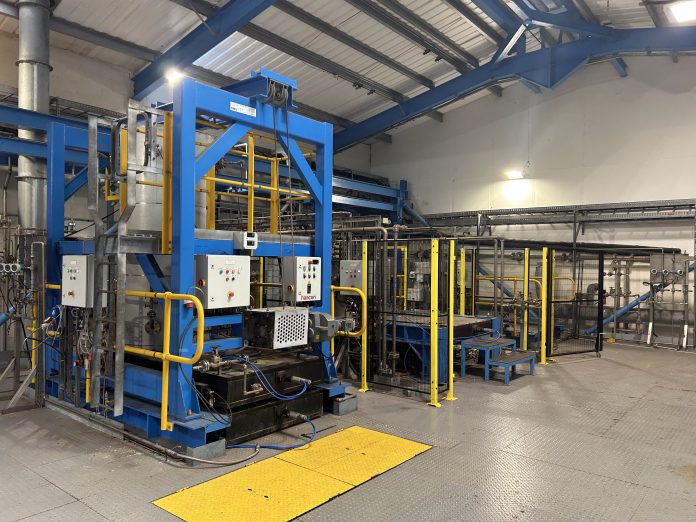Trade wars have shone the spotlight on global earth supply chain risks, midstream bottlenecks, and the importance of Western midstream capability. David Hawkins, from UK-based Metalysis, responds to China’s Rare Earth Element Controls.
The recent trade war between China and the US – fought via critical minerals or specifically rare earth element (REEs) restrictions instituted by China in April – was brought to a fragile truce in June via the ‘London Framework’.
From April to June, China used these minerals as a tool of political and economic warfare in response to the imposition of US trade tariffs.
The 7 REEs, or critical minerals targeted: samarium, gadolinium, terbium, dysprosium, lutetium, yttrium, and scandium – also their alloys, applications such as sputtering targets including these alloys, and magnets – were selected by the Chinese because of their automotive, defence, and semiconductor applications.
A number of car manufacturers were running so low on REE supplies that they were “willing to pay any price” to get the materials, which are essential for EVs. The greater threat was to the defence sector. Each F-35 contains 900 pounds of REEs. A Virginia-class nuclear-powered submarine: 9200 pounds.
Whilst there is now an agreement between the US and China for the supply of these materials, the real takeaway from this skirmish is that critical minerals and REEs are a key lever of geopolitical and geoeconomic warfare.
The situation the US – and the West – finds itself in is stark. The US is dependent upon China for 74% of its REE imports. When you move from mining to refining and processing – that is the midstream – this rises to 90%.
Since the 1990s and globalisation, the West has been happy to expedite mining and midstream processing to China, as it was considered dirty and polluting. The very recent media coverage of Baotou in China, where 80% of China’s REEs are mined, underscores the environmental impact REE mining has in a totally unregulated market.
This conflict also creates an opportunity for the West to build out its critical material supply chains. Large investments are already being made in the US, but the UK and other European countries are also racing to shore up their supply chains.
The UK has few critical mineral upstream assets: tin, tungsten, and lithium. However, our industrial and academic base has provided several midstream assets. Melting and chemical midstream solutions exist, but they have also been criticised for being high in energy use and heavy in pollutants.
Metalysis is a midstream asset based across two sites in South Yorkshire. Our FFC technology is an electrochemical process for reducing metal and mixed metal oxides. The metal oxide acts as the cathode in an electrochemical cell.
Historically, the counter-electrode, the anode, is carbon-based and a consumable item that releases carbon dioxide or carbon monoxide; however, we have developed inert anodes to release oxygen. The electrolyte is calcium chloride, a benign material with major use as a road de-icer in winter.
The process typically operates between 650 and 950 degrees Celsius, with a voltage passed across the electrodes during the process. Oxygen ions are released from the oxide and transferred to the anode, forming carbon dioxide or carbon monoxide (when using the graphite anode). The metal oxide is reduced to its elemental or alloy form at the cathode, where it is collected as a metal sponge.
This metal sponge then undergoes several post-processing stages: crushing and milling, followed by washing, before leaving a dried metal or metal alloy powder.
No hazardous chemicals are used during the process, which is a significant environmental improvement compared to traditional titanium midstream processes.
To counter the assumption that midstream processing is energy intensive, our electrolysis process is much more energy efficient than melting processes (by 50% when compared to traditional titanium powder production), and unlike other midstream processes the process is feedstock agnostic – it is both applicable to 49 elements of the periodic table. It can reduce a range of feedstock types: refined ores, mined ores, reclaimed materials, used additive manufacturing powders and even lunar regolith.
Metalysis is looking forward to the UK’s critical mineral strategy, which is due out in July. This strategy is determined to support the midstream with effective policy and funding.
This critical mineral strategy will be informed by the new Industrial Strategy, published on June 23. This strategy identifies key sectors: advanced manufacturing, defence, and clean energy are three of the eight, which will be a focus for support, while critical mineral capacity is identified as a foundational industry that cuts across the eight identified sectors.
The UK has a great opportunity to step-change its midstream. Now is the moment to support and invest to claim the UK’s rare-earth and midstream advantage.









